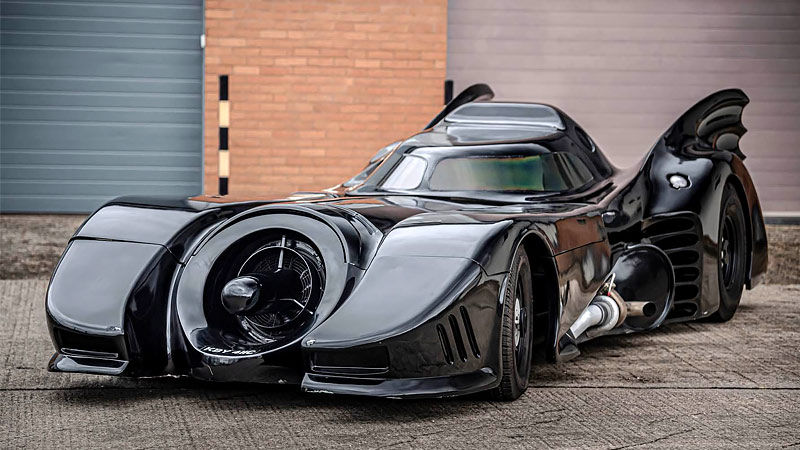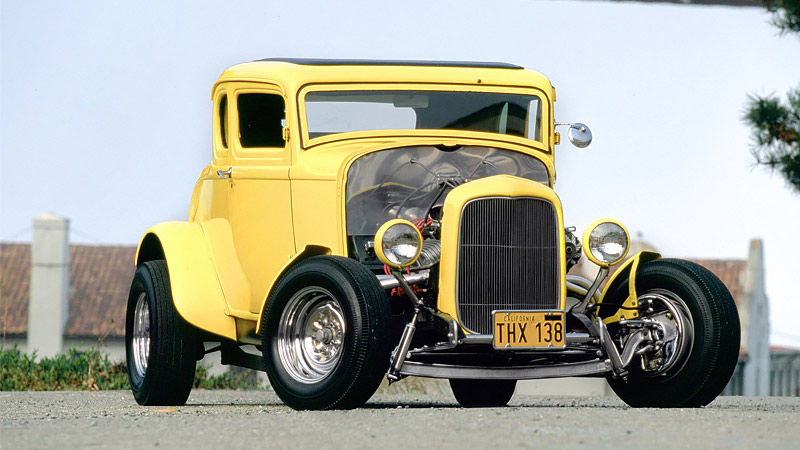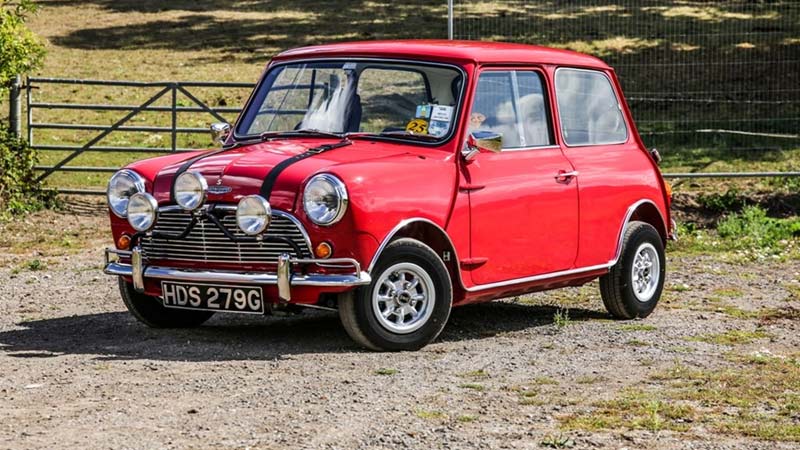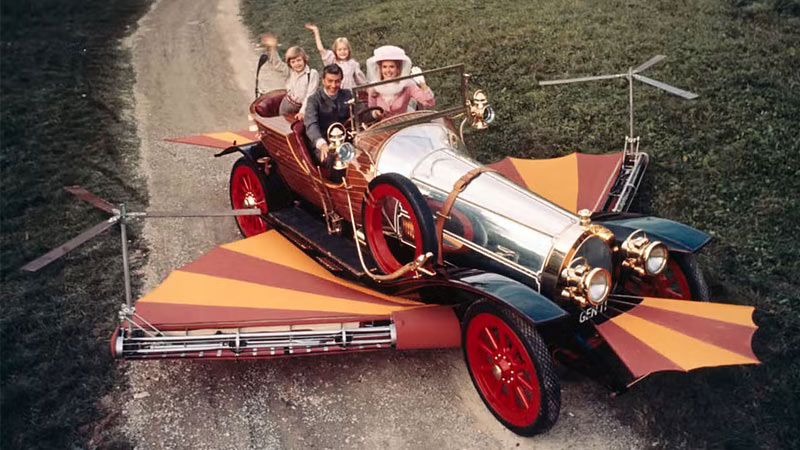Sometimes, the most interesting characters in a film don’t say anything; instead, they burn rubber. Most of us can name our favorite Cars from movies and TV series as quickly as we can name the actors or locations where they were filmed.
Many notable vehicles have appeared in films and television shows over the years. In some situations, the automobiles are as well-known as the drivers on big and small screens. When you mention a specific movie or TV show, people immediately think of the automobile in it. And regardless of age, most of us are familiar with the most famous cars from movies and television history.
“Speed,” the blockbuster thrill adventure starring Keanu Reeves, Sandra Bullock, and Dennis Hopper that shockingly pulled in $350 million while establishing itself as an action classic, has been out for more than 25 years. “Speed” also received three Oscar nominations, which is rather astounding for a film that is essentially one huge automobile chase — except it takes place on a bus. That’s not to say there aren’t plenty of vehicles — cars, trucks, boats, and spacecraft — from big and small screens alike that have become icons throughout the years. Here are the most famous cars from movies and television, listed in chronological order of their initial appearances.
Batmobile 1989

The Batmobile is unusual in that it has gone through several iterations, each of which is distinctive and iconic in its own right. The program producers were able to obtain this one-of-a-kind vehicle, and the rest, as they say, is history. Although the Batmobile in director Tim Burton’s 1989 Batman film was cool, as was the tank-styled one in filmmaker Christopher Nolan’s Dark Knight trilogy about the caped crusader, it is this original Batmobile from the campy ’60s TV series that is most remembered. The original Batmobile is still so famous that it has its website, complete with history, specifications, and information on replica models.
Aston Martin DB5

James Bond is one of the coolest characters in film history, and the Aston Martin DB5 is one of the coolest car in automotive history. The DB5, which initially appeared in 1964’s “Goldfinger,” the third Bond film, was the first to be outfitted with devices like spike strips, a smoke screen, a spinning license plate, an oil dispenser, and an ejector seat — and has since become the most iconic Bond automobile. The Aston Martin DB5 was later featured in “Thunderball,” “GoldenEye,” “Tomorrow Never Dies,” “Casino Royale,” “Skyfall,” and “Spectre.” The Aston Martin DB5 is a piece of art even without any Bond espionage upgrades. However, the amazing effects have made this automobile one of the most beloved movie cars of all time. What is the price? Each for $3.5 million.
The Mystery Machine

When investigating riddles, a dependable mode of transportation is required. That would be the Mystery Machine for Fred, Daphne, Velma, Shaggy, and Scooby-Doo, a blue and green ’60s panel van with its name and a few flowers imprinted in orange on the side. Although Fred officially owns the van, Shaggy, Scooby, and Scrappy borrowed it for their spinoff program. The Mystery Machine initially appeared in the original 1969 television series and has since been utilized in every spinoff and revival. The popular TV program also transported Fred, Daphne, Velma, Shaggy, and Scooby-Doo from one mystery to the next. A real-life replica of the van was created for the live-action film, released in theatres in 2002.
However, generations of youngsters who grew up watching the loving Scooby-Doo get out of one sticky predicament after another will remember the cartoon version of the vehicle.
1932 Ford Deuce Coupe in American Grafitti

George Lucas directed American Graffiti a few years before Star Wars, based on his experiences of 1960s automotive culture in California. Aside from a cast that included future megastars like Ron Howard, Harrison Ford, and Richard Dreyfuss, the film included some awesome hot rods. But just one has become the world’s most recognizable Deuce Coupe.
The Canary yellow ’32 Ford highboy is powered by a Chevy 327 V-8 and rides a touch high in the back for some amazing rake. The ’32 Ford blasts the Chevy off the line, and the Chevy flies off the road, flips, and blows halfway down the road. It’s a fantastic special-effects moment, but the identical ’55 Chevys from this film appear in another auto movie classic, Two-Lane Blacktop.
1977 Pontiac Trans Am from Smokey and Bandit

When Smokey and the Bandit director Hal Needham cast a 1977 Pontiac Trans Am opposite Burt Reynolds and Sally Field, he had no idea of the automobile’s impact on America. The Trans Am had essentially remained unchanged for more than a half-decade before the film’s release. But none of that mattered. Audiences desired a black and gold Trans Am after seeing it slip through bends, hop over damaged bridges, and avoid Sheriff Buford T. Justice for hundreds of miles.
Following the film’s release, sales increased by roughly 30,000 automobiles between 1977 and 1978 and by another 24,000 in 1979. The Starlight Black Special Edition paint job, the T-Top top, and the car were faster and handled better than the Corvette of the same generation, wowed Americans. The Trans Am became a legend due to these three factors, plus a big spoonful of Burt’s star power.
Also Read, Mercedes AMG One: The F1 Car on the Streets
General Lee from Dukes of Hazzard

Unlike Starsky & Hutch, which takes place within the same period as the TV program, this film takes place today. The automobile is a faded orange with a hand-painted “01,” black steel wheels, a regular front bumper, and no Confederate flag on the roof at the film’s start. After being vandalized, The General experiences a change halfway through the film: Cooter repaints it “Hemi” orange and adds ten-spoke turbine wheels, the octagonal “01,” a black grille guard, the flag, a “Dixie” horn, and “General Lee” above the door apertures.
According to reports, two dozen 1968–70 Chargers were utilized in the film, albeit most did not survive the action-packed sequences. The movie cars received aftermarket graphics kits to differentiate themselves from the show, but otherwise, they are very similar to the original General Lees. One of the TV cars featured as a close-up automobile in the film was utilized for a few shots before being returned to Warner Bros.
Following the 2015 Charleston, South Carolina shooting fatalities and renewed opposition to the Confederate flag, Warner Bros. stated that the manufacture of the General Lee toy vehicles would cease.
KITT from Knight Rider

The artificially intelligent Pontiac Trans Am from the highly popular program Knight Rider, KITT is probably the only television automobile from the 1980s better recognized than the Ferrari from Magnum PI. While Knight Rider may appear goofy in retrospect, it was a major smash on NBC from 1982 to 1986, making stars of both the series protagonist, actor David Hasselhof, and the Trans Am that the show was truly about—KITT, which stood for “Knight Industries Two Thousand.”
While the car’s major characteristics were that it could drive itself, communicate, and move quite quickly (all of which can be found in most automobiles nowadays), it caught the imaginations of children who couldn’t get enough of the program or its iconic car. In the 1980s, KITT’s image was plastered on lunch boxes, backpacks, and t-shirts everywhere, and the automobile was a best seller. And while David Hasselhof has lost some of his edges over the years, KITT is still as cool as ever.
Griswold family Station wagon

Vacation, the first film of a defining comedy franchise, is based on a story written by John Hughes for National Lampoon magazine. Following the success of Animal House, the team wanted to cash in and charged Harold Ramis with directing and Chevy Chase with directing the Clark Griswold character.
While Chase is the puppetmaster in charge of this cast of misfortunes, the “Wagon Queen Family Truckster,” or a substantially modified Ford L.T.D, Country Squire, plays an important role in the film. Who can forget the pea-green paint, faux-wood paneling, and eight headlights transporting Aunt Edna to Wally World and as a temporary hearse?
Mecum offered one of the film’s secondhand cars for $35,000 in 2013, but it did not sell. Later, it was listed on Hemmings for $39,900. “You think you dislike it now, wait ’til you drive it,” the auto salesperson advised after Clark made this unwelcome purchase.
Etco 1 from Ghostbuster

The Ectomobile, also known as the ECTO-1 and ECTO-1A, is as well-known as the guys who ride inside it, if not more so. It’s an end-loader ambulance/hearse combo built from a 1959 Cadillac Miller-Meteor powered by a 6.3-liter V-8 with 320 horsepower. The cruiser was originally intended to be more ominous, painted black with purple and white strobe lights to give it a shine. It would have been more than just a pedestrian automobile; it possessed extraordinary abilities, most notably interdimensional transit and the capacity to dematerialize. The concept was scrapped after it was pointed out how frequently the automobile would be filmed at night.
The second vehicle was modified into a fully equipped Ectomobile and given the designation ECTO-1A. Both automobiles were repaired after being abused and exposed to the elements on a Sony backlot. ECTO-1 was restored and utilized as a promotional tool for the video game’s 2009 release, while ECTO-1A was resurrected when a group of committed fans initiated a petition to acquire the car from Sony, eventually repairing it themselves.
The DeLorean from Back to the Future

The DMC-12, created by the great Giorgetto Giugiaro, was a stainless-steel marvel. The DeLorean, however, wasn’t exactly the supercar that glitzy styling promised, with a pokey 130-hp 2.9-liter V-6 under the hood. It doesn’t matter.
The DeLorean’s futuristic appearance, mixed with a little movie magic, made it legendary. Because it was a time machine in the film, the real-life specs didn’t matter, with one exception: According to reports, the prop team replaced the lethargic V-6 with a V-8 from a Porsche 928, which helped Marty McFly accomplish 88 mph, power up the Flux Capacitor, and go back to 1955.
Despite its cinematic stardom, the DeLorean was a disappointment on the market in the 1980s. However, today, the car’s one-of-a-kind retro-futurist design has won it a cult following. There’s even a new DeLorean Motor Company that restores and improves the vehicles. DeLorean is making a comeback with a future-ready electric vehicle for customers.
Mutt Cutts Van

It had to be iconic with a moniker like the Shaggin’ Wagon. Lloyd Christmas and Harry Dunne rode in elegance in this previously unremarkable 1984 Ford Econoline, known for its dependability. When the producers renamed it Mutt Cutts, it took on a new appearance as altogether other monsters. The tan carpet was added inside and exterior, and a tail, floppy ears, legs, nose, whiskers, and tongue. The van’s windscreen served both the driver’s and dog’s eyes while reaching the gas cap required lifting a hind leg.
The Bumblebee Camaro

Bumblebee debuted in the first film of the Transformers franchise as a 1977 second-generation Chevy Camaro. He finally upgrades to a fifth-generation, but keep in mind that this is 2007, and the car won’t be available for another two years. A convincing copy that does the toy line justice would have to be created because the car had to withstand the rigors of filming a Michael Bay film, and body panels built from the same molds as the 2006 Camaro Concept were employed.
Saleen, which produced the Cobras in xXx: State of the Union, created two Bumblebees out of two 5.7L, LS1-powered Pontiac G.T.O.s. Talk about building anticipation for the next Camaros.
The Herbie Beatle

Herbie was a sentient automobile long before Kit from Knight Rider. Herbie is never acknowledged as a Volkswagen in the first film since all branding has to be eliminated. However, VW was on board for the sequel, Herbie Rides Again.
Herbie appears somewhat differently in each of the five films, and over 100 automobiles were utilized in all five. Only three of the 11 automobiles produced by Walt Disney Studios for the first Herbie film are still known to exist today. Normally, the interior of this beetle would have been white, but for the film, it was painted grey to avoid reflecting the studio lights.
One of the VWs in the film was equipped with a Porsche Super 90 engine for added performance. If you’re suffering from a different type of Beetlemania and need a fast dose, Herbie #10 may be found at the AACA Museum in Hershey, Pennsylvania.
Mach 5 from Speedracer

This is the real-life Mach 5 from the 2008 Wachowski film Speed Racer, based on Tatsuo Yoshida’s manga and anime series from the mid-1960s.
Anyone who grew up in the 1960s, 1970s, or 1980s is familiar with Mach 5. Speed Racer was dubbed into English and numerous other languages. It became a mainstay of many children’s viewing diets (including mine and most likely yours), making it one of the first Japanese series to achieve widespread popularity in the west.
Mustang from Bullitt

Steve McQueen instantly made every car he drove, rode, or stood next to cooler. The Highland Green 1968 Ford Mustang GT 390, on the other hand, didn’t require much assistance. The pursuit sequences in San Francisco, following a 1968 Dodge Charger, are among the greatest ever captured on film. And the movie Mustangs’ stripped-down appearance made them appear slightly meaner than standard production ‘Stangs. Thanks to the original magnesium American Racing Torque Thrust wheels, McQueen’s vehicle has an aggressive stance.
When a vehicle maker produces a limited edition version twice, as Ford has done with the Bullitt Mustang, you know it has transcended its cult movie status and become an icon.
Gone in 60 Seconds’ Mustang

Eleanor is named after the original 1974 film, and this Dupont Pepper Grey 1967 Ford Mustang fastback is dressed as a Shelby GT500. Eleven fictitious Mustangs were manufactured for the film, with just three functioning as operational vehicles and two of them being destroyed during production.
Although it is not an original Shelby, it is powered by a 351 Ford V-8 crate engine with 400 horsepower. The car has pumped fender flares, a four-speed manual transmission, lowered suspension with coilovers, 17-inch wheels with Goodyear F1 tires, and a pseudo nitrous kit. A major “beauty” car for the film was auctioned for an astounding $1 million at Mecum in 2013, but you can acquire your own official Eleanor copy through Fusion Motor Company.
Dom’s Dodge Charger

The iconic Dodge Charger from 1968 to 1970 is a TV and movie star. The most renowned of them was the ’69 Charger “General Lee” from the television show The Dukes of Hazzard. Another Charger appeared in the cult classic Dirty Mary Crazy Larry from the 1970s. However, in 2000, the legendary Charger returned to the big screen as a frightening black street-racing vehicle for Vin Diesel. The Charger was tremendously awesome, with a wicked stance, massive back tires, and a massive engine and supercharger protruding out of the hood.
This automobile became famous during the film’s climactic action sequence. As Vin Diesel’s character approaches Paul Walker’s character, who is driving a Supra, he boots the throttle, causing the Charger to perform a sick wheelstand and burn out at the same time. Sure, it’s movie magic, but it’s still entertaining to watch. Later in the race, the two vehicles leap a set of railroad tracks just as a locomotive passes, and Diesel flips the Charger in a stunning finale to the pursuit scenario.
Bond’s Lotus Espirit S1

Another Bond vehicle, since it’s a classic.
By the 1970s, the sensual curves of 1950s and 1960s sports cars had given way to unique and futuristic wedge designs. Cars with sharp edges, such as the Lancia Stratos and Lamborghini Countach, altered the automotive scene. However, neither of them was ever driven by James Bond.
The secret spy in The Spy Who Loved Me aggressively pushed the white Series I Lotus Esprit. However, everyone remembers the scene when the automobile morphs into a submarine after Bond leaps into the ocean. The Lotus sprouts stabilizer fins and props and subsequently drives up onto the beach as it transforms back into a vehicle, leaving beachgoers gaping.
Last year, the Lotus resurfaced in the news after a couple discovered it in an unclaimed storage unit they had purchased for $1. They then sold it to Elon Musk for a million dollars.
Mini Cooper Italian Job

Although the Minis in the 2003 version are stunning, they pale in comparison to the models in the 1969 picture. The car’s manufacturer, British Motor Corporation, refused to give any vehicles to the film instead of selling the production crew six Minis at market value (leading 30 more to be purchased at retail). Despite BMC’s obstinacy, screenwriter Troy Kennedy Martin refused to swap out the automobiles for one of the world’s most iconic chase scenes.
Gianni Agnelli, the chairman of Fiat, was enthused about the film, offering to contribute all of the vehicles needed—hopefully Fiat 500s in place of the Minis—and cheerfully helping with the production. He let the team film and practice on the company’s grounds and provided the Mafia with three Ferrari Dinos to drive. The red, white, and blue escape cars have a four-cylinder, 75-hp engine, a peak speed of 97 mph, and are unlikely to carry more than 300 pounds of gold.
Although the film is mostly about automobiles and driving, Michael Caine was unable to drive at the time and is never seen driving a car in the film.
Chitty Chitty Bang Bang

This combination could not fail, based on Bond author Ian Fleming’s novel Chitty Chitty Bang Bang: The Magical Car and a screenplay by Roald Dahl. The automobile and tale were inspired by Count Louis Zborowski, a real-life racing driver who created and built four aero-engined Mercedes models. The moniker “Chitty Bang Bang” came from the idle sound of the autos.
Six automobiles were built for the film, including one fully working road-going vehicle with the UK registration GEN 11. Ken Adam conceived it, the film’s production designer, and manufactured by the Ford Racing Team or Alan Mann Racing—semantics—in 1967, and was equipped with a Ford 3000 V-6 engine and an automatic transmission. The studio constructed a smaller road-going version, a morphing car, a hover car, a flying car, and an engineless variant for trailer work. After filming, certain engines were added so they could be used to promote the film.
Batmobiles from The Dark Knight Trilogy

Batmobiles, like Bond vehicles, has transcended generations and continue to be stylish. However, Christopher Nolan’s rugged, military Batmobile Tumbler, which appears in Batman Begins and The Dark Knight, is the most artistically and technically important Batmobile since the George Barris-designed 1960s iteration. According to the filmmakers, a massive 350-CID Chevy V-8 propels the tank-like Tumbler to 60 mph in roughly five seconds, even with 37-inch off-road tires. The front tires are attached to an independent front suspension with approximately 30 inches of travel. Furthermore, the body is believed to comprise over 65 carbon-fiber panels.
The Tumbler is cooler than most movie props these days since it’s an actual item, not a computer-animated fiction.
Batmobile of 2022

The most recent addition to the live-action Batmobile lineup hasn’t given us as much information as we’d like. According to the trailers, The Batman’s Batmobile has a few common characteristics: a badass exposed mid-engine, illuminating inside sections, and a broad body. It appears to be incredibly safe despite having significantly more holes than any other Batmobile. Because we know it can withstand collisions and jump over fire, this automobile is more vulnerable when it is still than when it is moving. Hopefully, when Robert Pattinson’s Batman gains experience, he’ll realize the importance of having armor on his car.
Furthermore, it’s both menacing and elegant, which isn’t often the case with Batmobiles. This is not something you want to see following you down near Gotham sanitation. But if you saw it parked in front of City Hall, you’d think it was the best thing. The disadvantage for ordinary individuals is that its wide design would make it difficult to convert into a regular automobile. But you can guarantee we’d want to go off-road with this bad boy.
Also Read, Ambassador: The Legend of the Elite will be Back
Mr. Bean’s Mini

Mr. Bean’s legendary Mini 1000 debuted in the Mr. Bean animated television series. The animation also features the Reliant Supervan, which Bean repeatedly drives off the road while driving his Mini.
This automobile previously belonged to Rowan Atkinson’s character, Mr. Bean, and was featured in the character’s third season. On January 1, 1991, it made its debut television appearance. In this episode, Mr. Bean realizes he doesn’t have enough change for the multi-story car park ticket machine and attempts to circumvent the exit barrier! On another occasion, Mr. Bean oversleeps, misses his dentist appointment, and dresses while driving the Mini to the surgery.
V16 Hydra Schmidt Roadster

The V16 Hydra Schmidt Roadster is the type of car that makes kids want to be villains rather than heroes. Johann Schmidt’s carriage, alias Red Skull, Adolf Hitler’s chief of armaments, Captain America’s enemy, and one of “the greatest threats to civilization.” As a member of the Hydra terrorist outfit in his leisure time, Red Skull had access to extraterrestrial technology that went into several motorized Hydra delights. Still, his roadster distinguished as the fastest imaginary road automobile globally with nothing more unusual than a massive airplane engine.
Daniel Simon is a designer who the automobile business cannot contain. Formerly of Volkswagen and Bugatti, the guy’s creativity was too broad to be limited to door handles and dashboards. On his Cosmic Motors website, you might call his art, which depicts an automotive future consisting of wild aesthetic remixes of Porsche 917s, Can-Am McLarens, and more, galactically enormous.
